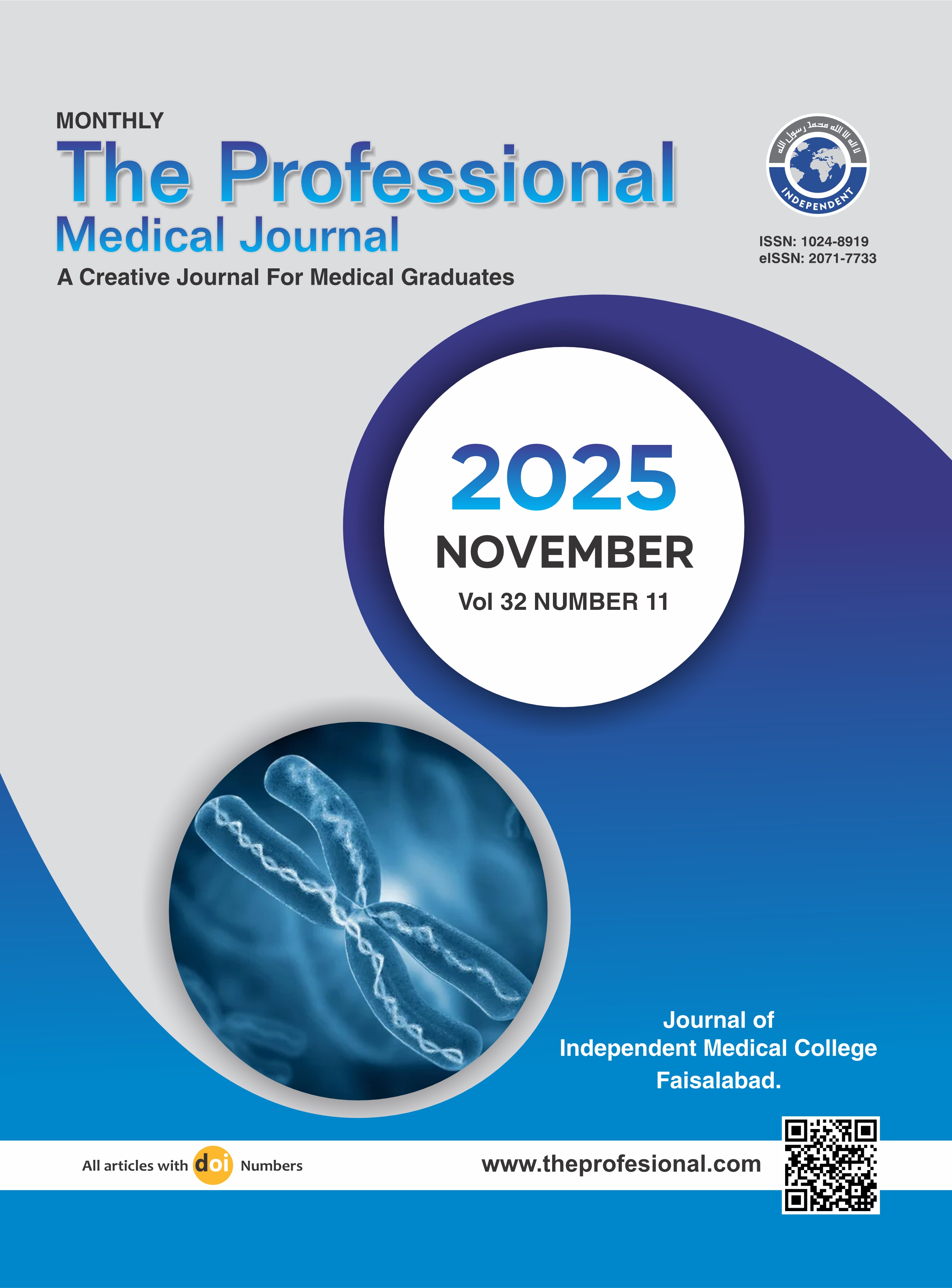Frequency and impact of contributing factors for episiotomy use in multiparous women in Liaqat Memorial Hospital Kohat.
DOI:
https://doi.org/10.29309/TPMJ/2025.32.11.9908Keywords:
Episiotomy, Multiparous Women, Obstetric Interventions, Perineal Tears, Risk FactorsAbstract
Objective: To determine the frequency of episiotomy use in multiparous women and assess its association with demographic, obstetric, and clinical factors. Study Design: Cross-sectional study. Setting: Department of Obstetrics and Gynecology, Liaqat Memorial Hospital, Kohat. Period: 18th May 2024 to 18th November 2024. Methods: A total of 146 multiparous women aged 18–40 years were enrolled using non-probability consecutive sampling. Data on age, BMI, gestational age, socioeconomic status, education, occupation, comorbidities (diabetes, hypertension), and predisposing factors (fetal position, obesity, previous episiotomy/C-section) were collected. Episiotomy rates and associations were analyzed using IBM SPSS version 25, with Chi-square/Fisher’s exact tests (p ≤ 0.05 considered significant). Results: Episiotomy was performed in 80 women (54.8%). Significant associations were found with BMI (p=0.002), gestational age >38 weeks (p=0.005), hypertension (p=0.008), and employment (p=0.016). No significant links were observed with age, diabetes, education, or socioeconomic status (p > 0.05). Predisposing factors included previous episiotomy (35.6%), obesity (20.5%), and occipito-posterior fetal position (17.8%). Conclusion: Episiotomy was frequently performed in multiparous women, with higher likelihood in overweight/obese, hypertensive, employed, and late-term pregnancies. Evidence-based guidelines are needed to optimize selective use.
Downloads
Published
Issue
Section
License
Copyright (c) 2025 The Professional Medical Journal

This work is licensed under a Creative Commons Attribution-NonCommercial 4.0 International License.


